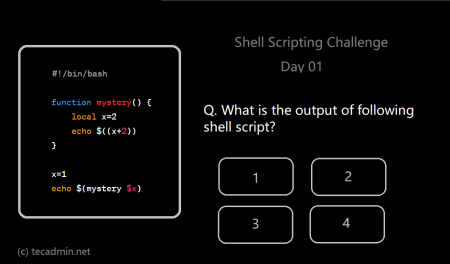Process substitution is a powerful feature in Bash that allows you to use the output of a command as if it were a file. This can be useful in a variety of situations, such as when you need to compare the output of two commands, or when you want to redirect the output of a command to another command. In this article, we will provide a comprehensive guide to process substitution in Bash, explaining its syntax, use cases, and some common pitfalls and limitations.
1. Understanding Process Substitution
Process substitution is a feature in Bash that allows you to use the output of a command or process as input for another command. It is often used when you need to send the output of one command to multiple commands, or when you need to compare the output of two or more commands. The concept of process substitution is similar to piping but has the advantage of allowing more complex interactions between commands.
2. Syntax of Process Substitution
Process substitution in Bash uses the following syntax:
- <(command) – This syntax creates a named pipe (also known as a FIFO) and connects the output of the command inside the brackets to it. The named pipe behaves like a file, allowing you to use it as input for another command.
- >(command) – This syntax also creates a named pipe, but connects it to the input of the command inside the brackets. This allows you to redirect the output of one command to the input of another command.
3. Examples of Process Substitution
3.1. Comparing Output of Two Commands
Process substitution can be used to compare the output of two commands using the diff command. For example, to compare the output of ls in two different directories:
diff <(ls dir1) <(ls dir2)
3.2. Redirecting Output to Multiple Commands
You can use process substitution to send the output of a command to multiple commands. For example, to send the output of ls to both grep and wc:
ls | tee >(grep 'txt$') >(wc -l) > /dev/null
3.3. Chaining Process Substitutions
Process substitution can be chained to create complex pipelines. For example, to sort and count the words in a text file, and then display the top 10 most common words:
cat file.txt | tr '[:space:]' '\n' | grep -v '^$' | sort | uniq -c | sort -nr | head -n 10
3.4. Merging and Sorting Two Files
Suppose you have two sorted files, file1.txt and file2.txt, and you want to merge them into a new sorted file, merged.txt. You can use the sort command along with process substitution to accomplish this:
sort -m <(sort file1.txt) <(sort file2.txt) > merged.txt
3.5. Displaying Differences Between Directory Trees
You can use process substitution to compare the directory structure of two directories using the tree command and diff:
diff -y <(tree -fi dir1) <(tree -fi dir2)
3.6. Filtering and Saving Log Entries
Suppose you have a log file, and you want to extract entries containing the word "ERROR," save them to a separate file, and display them on the screen. You can use grep and tee with process substitution to achieve this:
grep 'ERROR' logfile.txt | tee >(cat > errors.txt)
3.7. Performing Arithmetic Operations on Columns of a CSV File
You can use awk with process substitution to perform arithmetic operations on columns of a CSV file. For example, to add columns 2 and 3 of a CSV file and display the result:
awk -F, '{ print $1, $2 + $3 }' <(cat file.csv)
3.8. Combining Standard Output and Standard Error
To combine standard output and standard error streams into a single stream, you can use process substitution with cat:
command 2> >(cat >&1)
In this example, command represents the command you want to execute. The process substitution >(cat >&1) redirects the standard error stream (file descriptor 2) to the standard output stream (file descriptor 1).
These examples illustrate the power and flexibility of process substitution in Bash. By understanding how to use this feature effectively, you can create more complex and efficient scripts.
4. Limitations and Pitfalls
- Process substitution is not available in all shells. It is a feature of Bash and a few other shells like Zsh and Ksh, but not available in the POSIX-compliant sh shell or some other shell implementations.
- Process substitution does not work with commands that require seeking (moving forward or backward in the file). Named pipes do not support seeking, so commands like less or vi will not work with process substitution.
- When using process substitution, it's important to remember that the command inside the brackets runs in a subshell. This means that any variables set or modified within the command will not be available in the parent shell.
Conclusion
Process substitution is a powerful and flexible feature in Bash that allows you to treat the output of a command as a file, making it easy to combine and manipulate data from multiple commands. This comprehensive guide has demonstrated the syntax of process substitution, provided examples of common use cases, and discussed some of its limitations and pitfalls.
With a strong understanding of process substitution, you can streamline your Bash scripts and make them more efficient by reducing the need for temporary files and simplifying complex pipelines. However, it's essential to be aware of the limitations and potential pitfalls when working with process substitution to ensure that your scripts function correctly across different shell environments and do not encounter unexpected behavior.
By mastering process substitution, you can expand your Bash scripting skills and tackle more complex tasks with ease. Whether you're comparing the output of two commands, redirecting output to multiple commands, or chaining process substitutions to create intricate pipelines, this powerful feature will enhance your scripting capabilities and help you become a more proficient Bash user.



